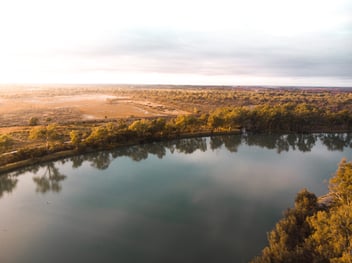Opinion: COVID-19 is forcing businesses to innovate, and quickly
A version of this story was first published by Aurecon. Read the original.
John McGuire started Aurecon's Just Imagine blog four years ago with one goal: to give people permission to think differently about the future.
Since that time, our people have written about an amazing array of topics covering leadership, diversity, disruption and sustainability to name but a few. Each time, the content, topic and position has been rather controversial and future oriented. We adopted a style of being the provocateur and challenging the status quo to shake things up and make people look twice.
Yet four years ago, or even four weeks ago, I never could have seriously contemplated the scenario we are seeing right now unfold before our eyes. I wouldn’t have been taken seriously had I written a blog that started with, “Just imagine the world coming to a grinding halt for six months…” – even though we are the ones who like to go to the edge!
But here we are.
So, what do we do when the almost implausible becomes your new reality? What do you do when a disruptor, in this case biological rather than digital, rewrites the business plan for almost every organisation on the planet?
True disruptors are rarely your current competitors
They come from below or places you are not expecting. Mehrdad Baghai, co-author of The Alchemy of Growth, said organisations need to work across three horizons simultaneously in order to achieve sustainable growth and defend against disruption.
Horizon 1 is your current business as usual. Horizon 2 is new products and services and Horizon 3 is the space for experimenting and seeding options for the future. This strategy has received much recognition in the business world. However, most organisations fail to implement it effectively. Most companies are too busy in Horizon 1 to dedicate the necessary time and effort to Horizons 2 and 3. What this does is leave organisations vulnerable to disruption and, for many, this is where we are seeing them now.
What COVID-19 has unwittingly done in a matter of weeks is reduce the H1 revenue stream of many businesses around the world, in some cases to zero. It’s proving to be the ultimate disruptor. New business models will need to be written, and quickly. The imperative of finding new sources of revenue from your current under-utilised assets will come to the fore.
Businesses have a choice now. The natural reaction – either in busy times or times of crisis – is to focus only on H1 and ignore H2 and H3. Yet history shows that life changes significantly after a major event . Do you hunker down and hope that when things are over, you’ll still be able to put up an open for business sign? The trap in this thinking is that your customers’ behaviours are likely to have changed. They might not want your products or services in the way you had previously delivered them.
The risk of becoming risk averse
The obvious reaction for many will be anxiety and, what follows from that, fear. In the face of these emotions, we inherently seek security and safety. We become risk averse.
When we become risk averse we don’t try new things and we don’t experiment. If this occurs at an organisational level, and many organisations become risk averse, then we quickly end up all looking the same. This is a world of lack of differentiation and a sure path to commoditisation.
Success after COVID-19 will require a new way of thinking about your assets and customers and it will need a design mindset. Your innovation will need to be the sharpest it has ever been to make it through to the other side and grow stronger as a result.
Understanding how customer behaviours are going to change will be crucial for future success .
How can you innovate and use assets differently? For example, hotels are now being used as isolation spots. What pain points are your customers experiencing right now from social isolation and what insight can you gain to design a better product/service? I’ve seen nimble gym owners pivot and rent out their equipment – perhaps this model will be continued even when they reopen.
Almost every industry will be impacted as this is disruption on a scale we’ve never seen before. Previously disruption was thought about on an industry by industry basis, but we haven’t considered the same disruptor disrupting everything at the exact same time.
Perhaps an alternative exists
During the months ahead, we are all likely to get a crash course in the very foundations of economic theory. We will need to think deeply about how customer behaviour will change in the way they consume our products and services.
By now, I’m sure you’ve seen the memes circulating about how Shakespeare wrote King Lear and Isaac Newton invented calculus during quarantine for the plague. The Great Plague of London has been christened as giving birth to modern society, resulting in the creation of hospitals, guns and modern homes. As labour became more precious, tools that made work easier were invented. Clocks and hourglasses came into existence to track the time people spent working; the first eyeglasses were introduced to increase productivity.
An outbreak of smallpox in Boston in 1721 resulted in the creation of the first independent newspaper in the US. The 2002 SARS epidemic in China is largely credited with the penetration of ecommerce in China, and it’s expected a post-COVID China will be a cashless society.
For the next few months, Just Imagine will focus on thinking differently about assets, customers, human behaviour and business models, giving oxygen to the innovations and inventions that could potentially emerge from COVID-19. We will use our imagination to think of the world after coronavirus, and what this could mean for businesses and infrastructure. And perhaps when we 'just imagine” alternative possibilities in the future, they might not be such a far stretch from our actual reality.


